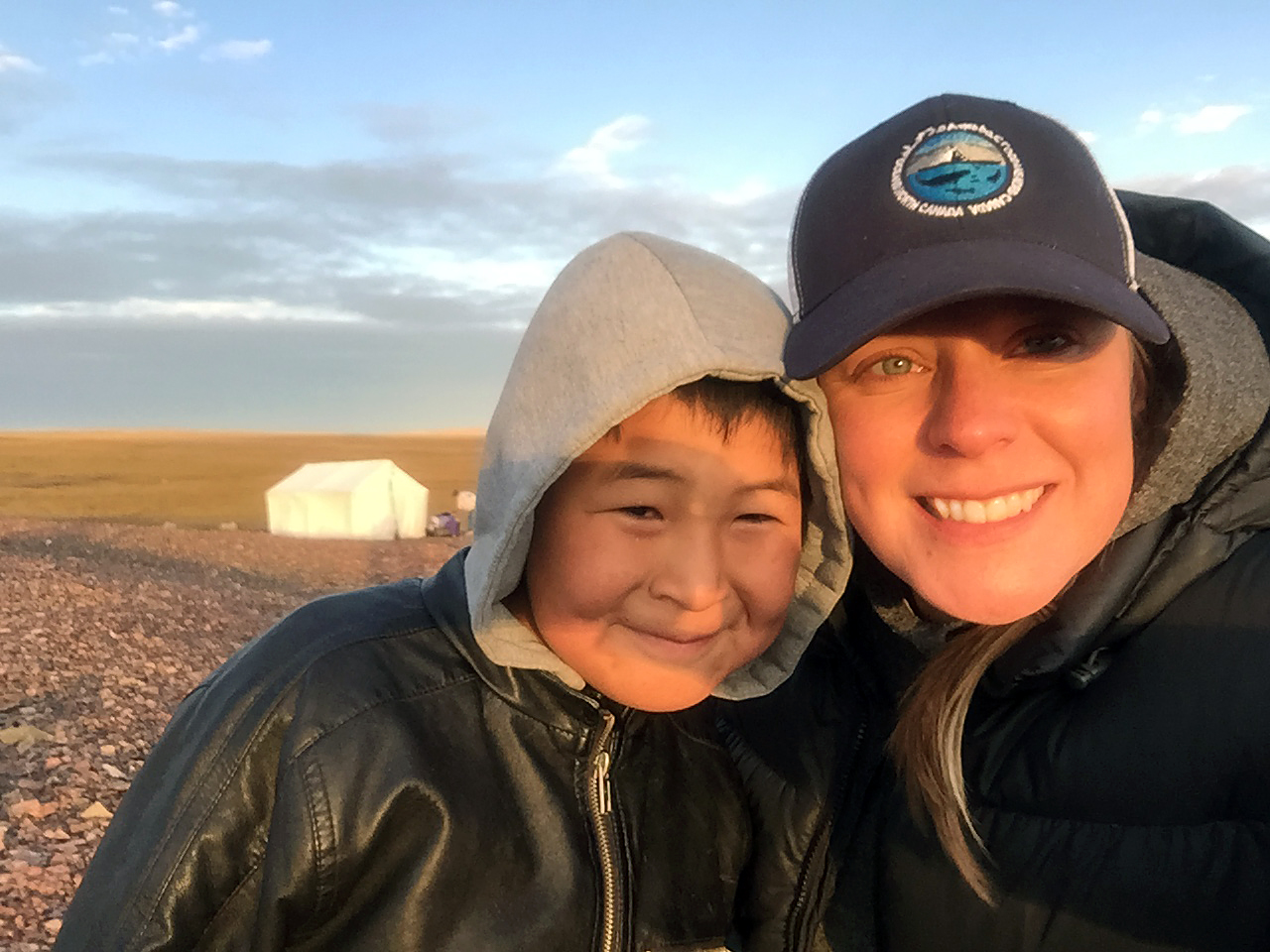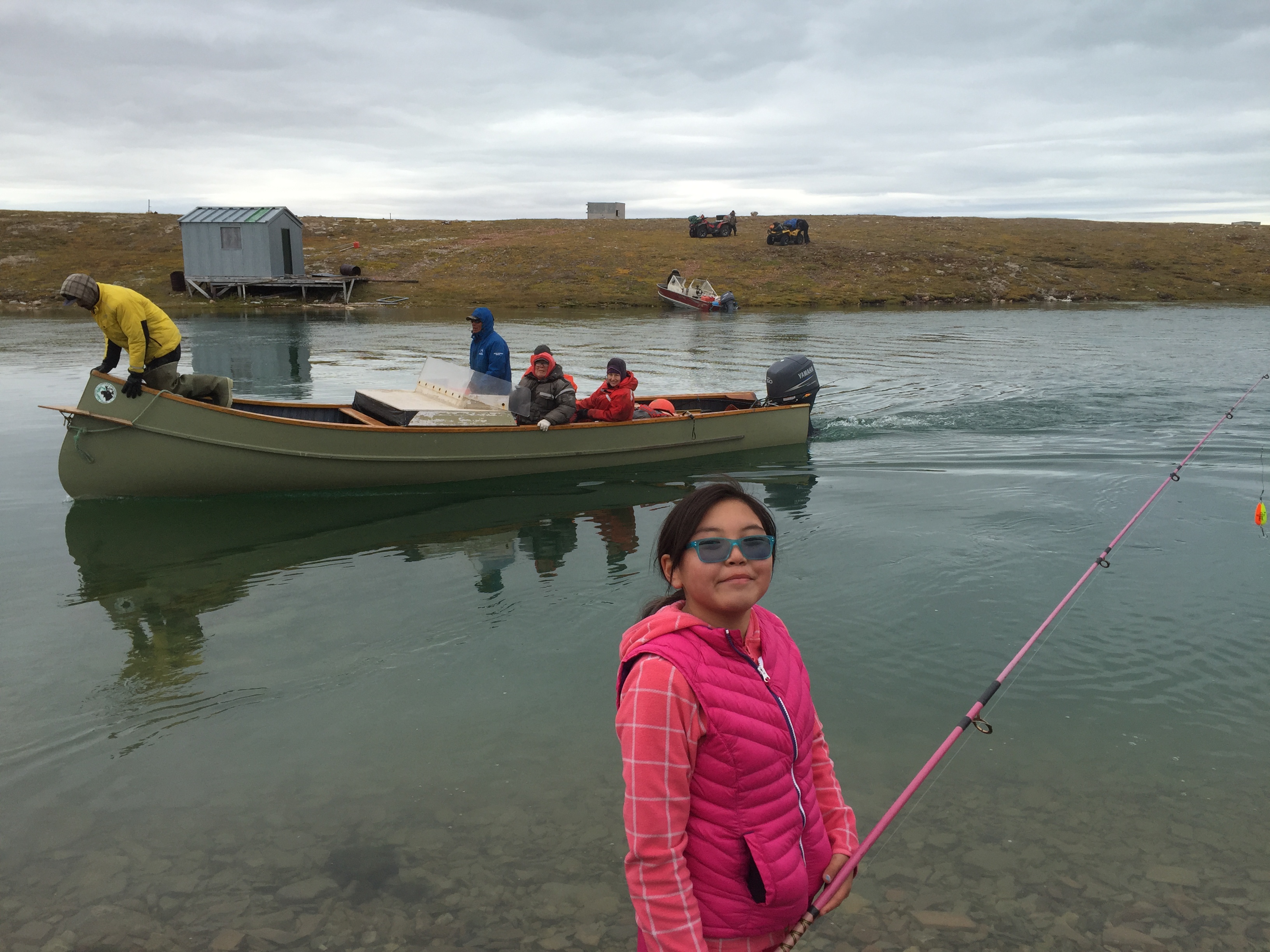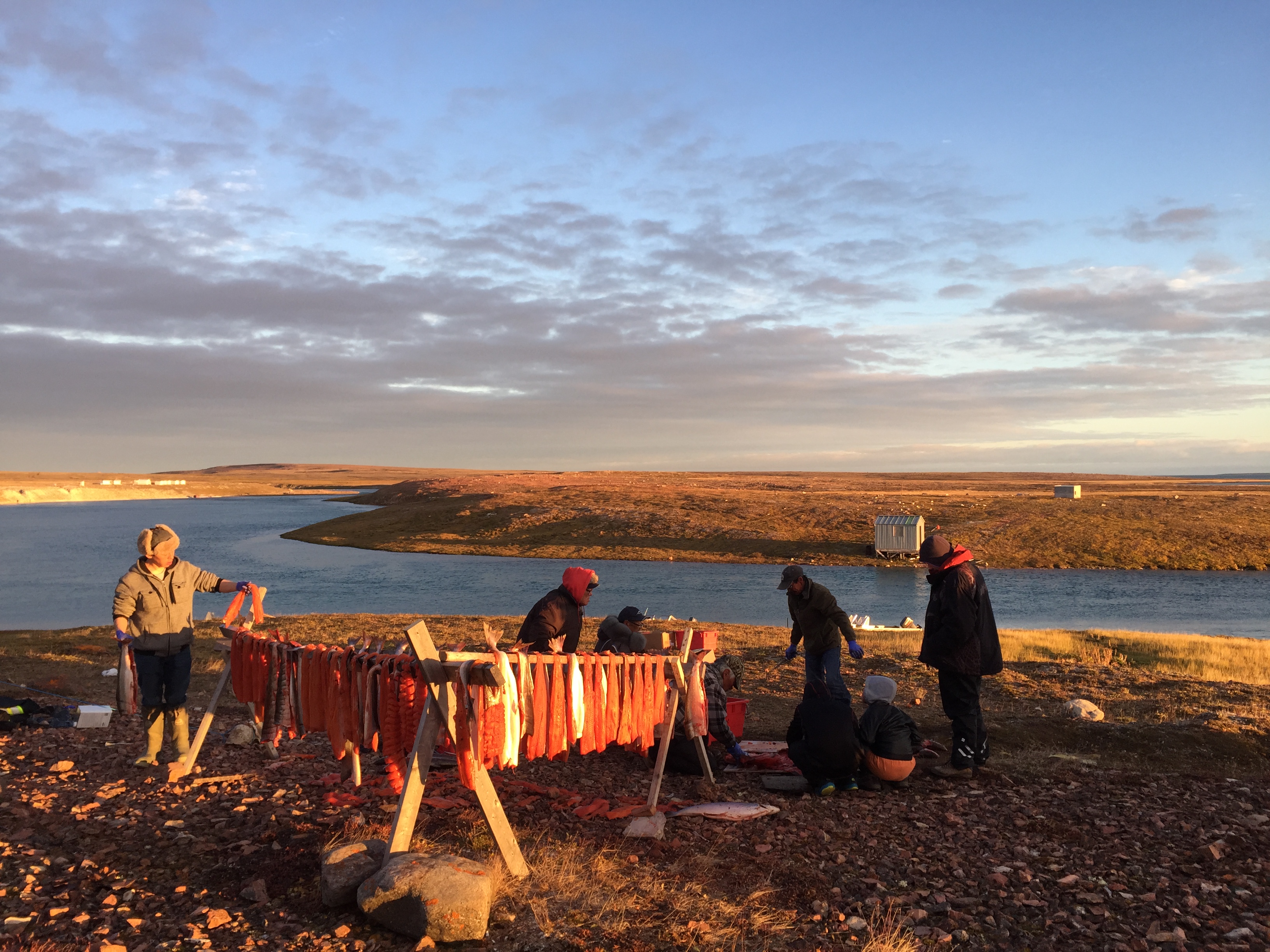A Place of Many Fish
On a warm summer day, I joined two dozen youth and elders from Cambridge Bay, Nunavut on a 50-kilometre journey by aluminum motor boats and motorized freighter canoes to Iqaluktuuq, a traditional fishing site. Known in the Inunniaqtun language as “A Place of Many Arctic Char,” we traveled there for a five-day elder-youth camp to learn about Arctic Char. The elders, some of whom had once lived in Iqaluktuuq, wanted to pass on their extensive knowledge about this fish that has sustained local Inuit for millennia.
Alex Anavilok (l), of Cambridge Bay, and Jennie Knopp (r), community and science adviser for Oceans North, at Iqaluktuuq camp.
Credit: Jennie Knopp
On the way there, we stopped on a small stone-covered island for a quick snack of tea and raw, dried fish and to take in the expansive view of the turquoise and blue clear ocean waters. By the time we arrived in Iqaluktuuq, people were already shuttling gear and supplies from their boats and setting up a tiny village of canvas wall-tents for sleeping and cooking. The camp took shape at the top of a small stone-covered hill along the Ekalluk River, near where it meets the ocean. Youth threw fishing lines into the strong river current and caught Arctic Char that were returning from the ocean.
Once we reached the site, several elders were overcome with emotion. Decades ago, they had lived here with their extended families before they were relocated by the federal government to the permanent settlement of Cambridge Bay. Their matchbox houses, tiny one-room structures made of plywood, still stood on the shore where the river meets the ocean.
Sasha Evetalegak fishes for Arctic Char along the Ekalluk River as canoe transports gear to camp.
Credit: Jennie Knopp
Elders teach youth to prepare Arctic Char for drying. Dry char is called piffi in Inunniaqtun.
Credit: Jennie Knopp
We were joined at the camp by 14 support staff, including community leaders from Cambridge Bay, as well as scientists and videographers from the south. The Cambridge Bay Hunters and Trappers Organization (HTO), along with two scientists, had worked for years to organize this event in August 2016. Because of my collaborative work on marine conservation with the HTO and the scientists, I was honored to be invited.
Thousands of char migrate from Ferguson Lake along the Ekalluk River to the nearby ocean to feed every year. And every year they return along the river to the lake to spawn and overwinter in freshwater. Today a commercial fishery operates in this area, and the char are processed by community members at the Inuit-owned Kitikmeot Foods.
We spent our days fishing, preparing char to eat and learning all about this important country food from local experts and scientists alike. Elders taught us about the ways of the past, such as how to make build fish nets and traditional harvesting tools, and how to make a bag out of a whole char. Experienced hunters took the youth on a caribou hunt, introducing some of them to their first time harvesting on the land. Besides learning from the elders and local experts, the best parts of the camp were seeing the youth so engaged, and of course eating fresh char and caribou.
The traditional knowledge shared by the elders will also assist with the conservation and management of Arctic Char around Cambridge Bay. You can watch a short video of the camp here.
Arctic Char dries in the wind at Iqaluktuuq.
Credit: Jennie Knopp
Some of the Iqaluktuuq camp participants in front of the tent village and a rack of drying Arctic Char.
Credit: Jennie Knopp
Jennie Knopp is a community and science adviser for Oceans North.









